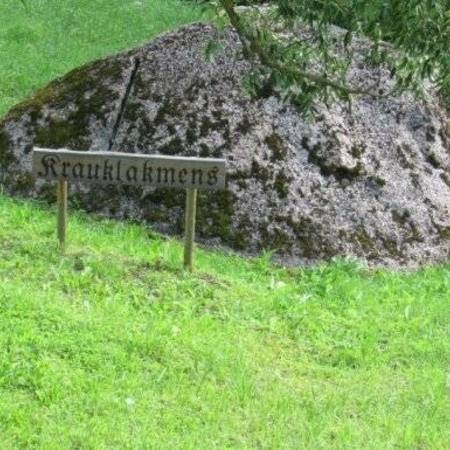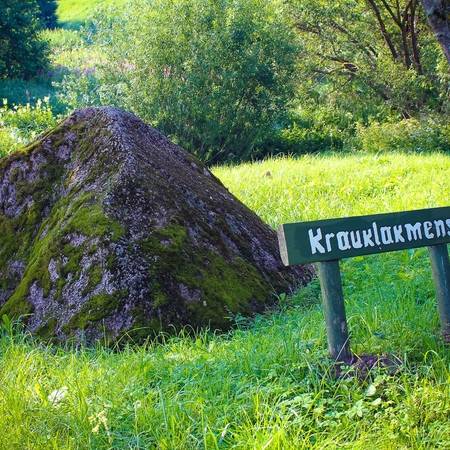The cult stone is located on the edge of the territories inhabited by the Selonian and Latgalian. The Selonians and their ancestors used the Kraukļi Stone for a long time for various cult rituals. The 40-tonne stone, also called Devil’s stone, has not sunk in the marshy soil, but bases upon a supportive construction layer of other stones. Circumference at the bottom - 12.5 m, height - 2 m, length - 3.9 m, and width - 3.8 m. The Kraukļi Stone is not oval, as is typical of the stones brought by the glacier but is in the shape of an axe. Several formations can be seen on its surface, which could have appeared because of certain mechanical processing. It is the only stone of its kind in Latvia, as it differs from classic sacrificial stones with irregularly shaped recesses and other sacred stones. A cultural layer more than a meter thick has been identified, during archaeological excavations in 1974. Finding dated back to the 12th-13th century testify that cult rituals took place here. Aizkraukle field-works’ group carried out excavations at the 35 m² area, when removing the topsoil a black, peaty occupation layer (0,8 - 1,2 m thick) was discovered. Predominantly the layer consisted of bluish, clayey sand. Finding: many small coals, shards of glazed tableware, tiny iron waste materials, nails, dross, half of an iron footstep from 12th century, whetstone, remains from a wooden tub, small sawn horn tablet Considering the findings, there was a smithy located close to the stone. The stone and nearby spring have been referred to in the novelettes “Sūnu ciema zēni” (The Boys of Moss Village) and “Zaļā zeme“ (Green Earth) written by A.Upitis. Several stories tell that a pot with money is hidden under the stone, and that the devil was sacrificed near this stone because he wanted to dam the Dauguva with it.

+2




Reviews